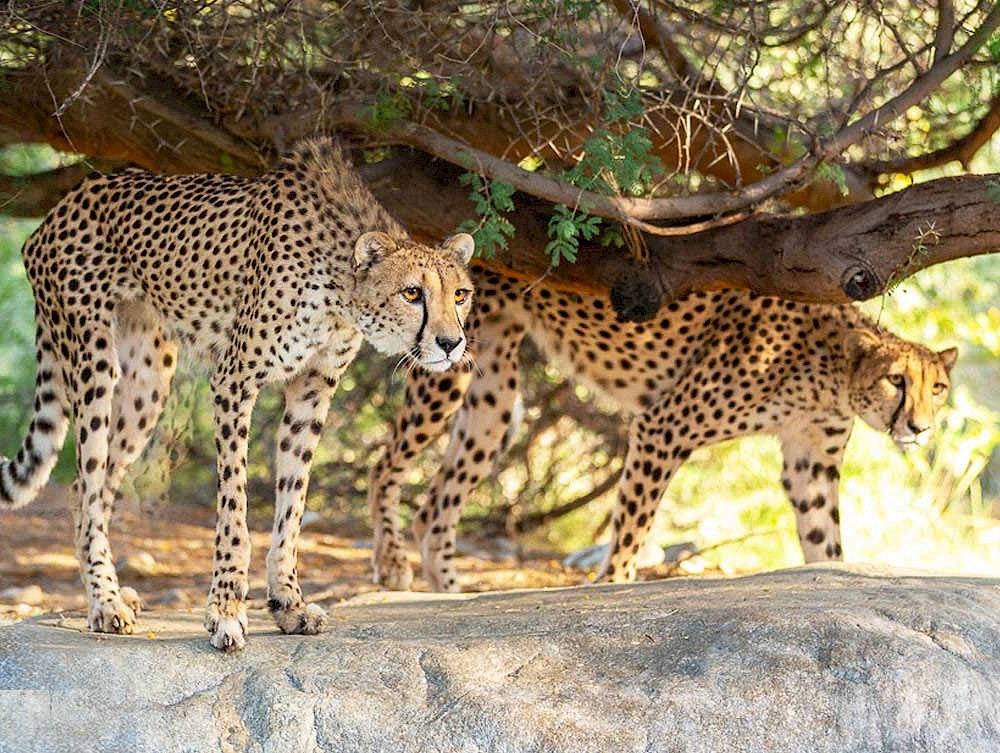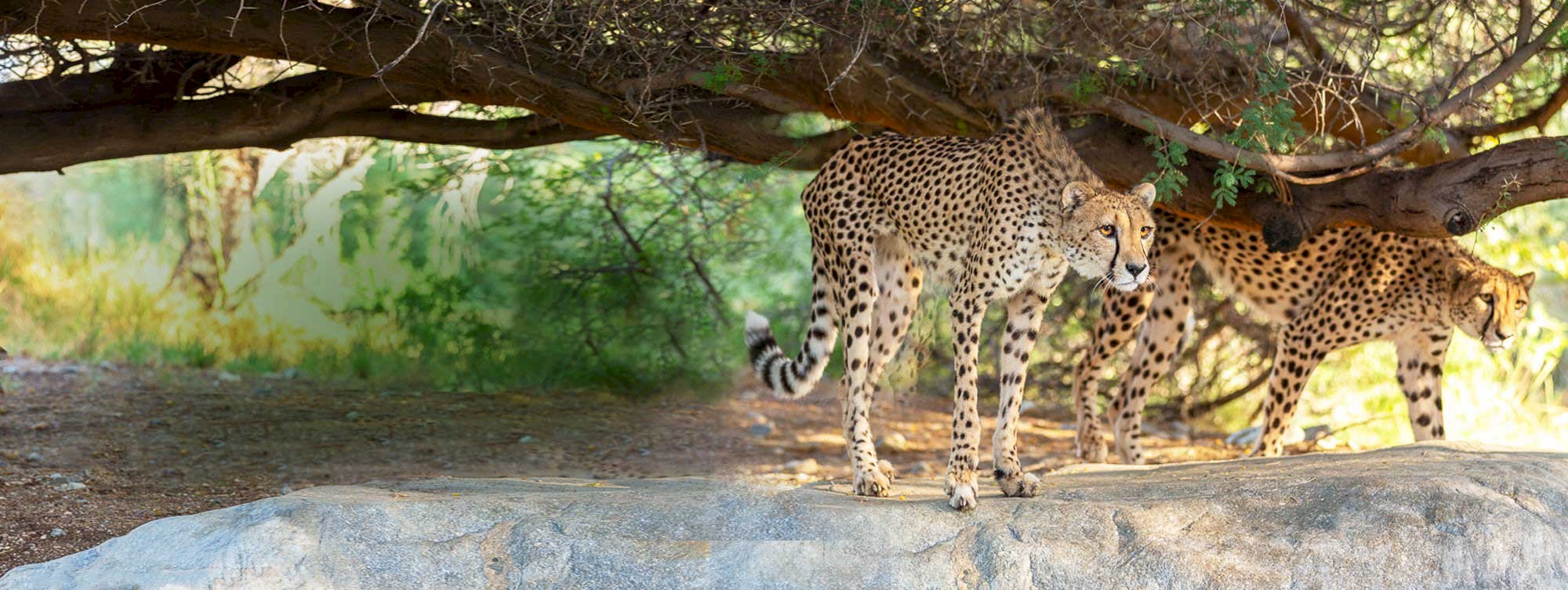Desert Tortoise Headstart Project
September 30, 2022
By Emily “Lou” Thomas, Assistant Conservation Scientist
People sometimes joke that storks deliver babies. Well, they don't, but if they did, an entire flock would have landed at The Living Desert a few weeks ago with desert tortoise hatchlings. Instead, a dedicated team of ecologists from San Diego Zoo Wildlife Alliance came to The Living Desert bringing nearly 70 hatchlings! Desert tortoises are the California state reptile however, despite this title, they are critically endangered. Desert tortoise populations continue to decrease due to factors like habitat loss caused by raven predation and climate change.
The biggest challenge for desert tortoise hatchlings is typically escaping predators. Until they are about five years old, hatchlings in the wild have soft shells, meaning they are at their most vulnerable to potential predators. The top predator for tortoises is the common raven! Ravens are incredibly smart and have strong beaks that can peck through a young tortoise’s shell. While ravens are a native and natural predator of desert tortoises, their population has exploded to almost 20 times larger than it was 50 years ago. This dramatic increase is mostly attributed to the fact that these birds learned to take advantage of human-provided resources for food and water.
Although ravens pose a huge threat, climate change also affects desert tortoises. Climate change, for our deserts, means hotter, longer summers with increasingly drastic weather events, like flash floods and wildfires. Tortoises are ectotherms, meaning they cannot regulate their body temperature the way humans and most mammals can. For tortoises to get warm, they need to go into the sun or onto a hot surface. To cool down, they need to get into the shade, a burrow, or in shallow water. Tortoises are adapted to live within specific temperature ranges. When the weather does not permit them to be within that range, they usually remain in the safety of their burrows where the temperature is more stable. Seeking reprieve in their burrows, tortoises spend less time foraging for food, getting sunlight (which has many health ramifications), or looking for potential mates.
What does this mean for how we approach conservation actions? We like to give desert tortoise hatchlings a “headstart.” Our partners at San Diego Zoo Wildlife Alliance head into the desert and locate specific females by radio tracking. Zoo staff take portable x-ray machines into the field to determine which female tortoises have eggs. The tortoises go into safe holding areas until they lay their eggs. Once they have finished laying their eggs, the females return to their habitat and researchers monitor the nesting sites. The clutches emerge and San Diego brings the hatchlings to The Living Desert where they live for the next six months. In our care, they receive a more nutrient-dense diet than they would in the wild and a place safe from predators. Within those six months, the hatchlings will grow to be about the size of two-year-olds before they head back to their hatching pens. As they grow, their shell thickens and hardens, making them better able to fend off potential predators. After a period of re-acclimatization to the desert, the hatchlings are released with radio trackers and monitored. Our goal is to keep the hatchlings safe during some of their most venerable years and release them with a higher chance of survival.
In order to sustain a growing desert tortoise population, habitats need to be safe for hatchlings. You can help maximize our efforts by limiting the resources available to ravens so that their populations can stabilize to a natural level. One of the easiest and most effective ways to do this is by covering your trash! Ravens are intelligent birds and have learned to take advantage of what humans unknowingly provide-- extra food and water.
Another way to help save desert tortoise habitats is to address climate change. Stay up to date with climate news, volunteer with an environmental non-profit, donate to reputable organizations that are creating solutions to climate change, and be vocal about climate policy. Do not be afraid to reach out to political officials to support climate-friendly changes. You can also support local conservation organizations and programs like ours here at The Living Desert!
We each have the power to protect our local wildlife, if we know what challenges they face and what causes we can support. Thank you so much for spending your time learning more about desert tortoises and the role you can play in their survival.
Come see the incredible, and incredibly cute, desert tortoise hatchlings housed in the safety of The Tennity Wildlife Hospital and Conservation Center.
















